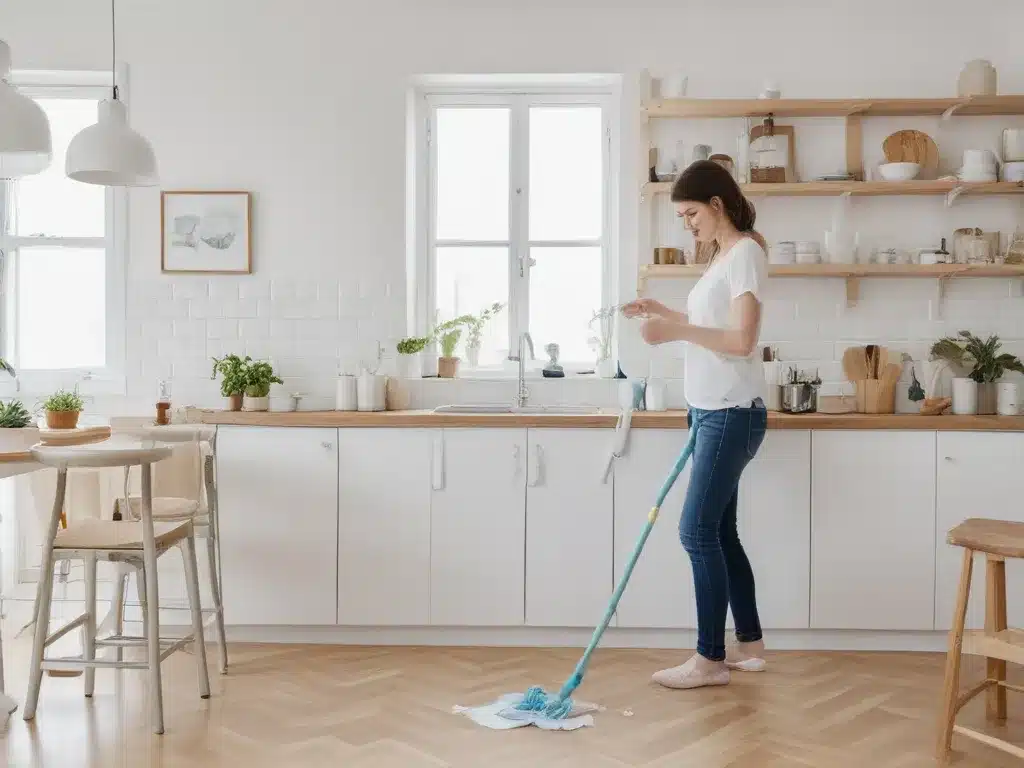Introduction
As a homeowner or renter, maintaining a clean and healthy living environment is crucial for overall well-being. However, many conventional cleaning products contain harsh chemicals that can harm our health and the environment. In this comprehensive guide, I will share my expertise in creating a non-toxic and healthy home through a detailed cleaning checklist. We will explore natural alternatives, effective techniques, and a room-by-room approach to ensure a thorough cleaning process.
The Importance of a Non-Toxic Home
A non-toxic home – is a home that promotes good health. Conventional cleaning products – often contain harmful chemicals that can cause respiratory issues, skin irritation, and even long-term health problems. By using natural and non-toxic alternatives, we can create a safe and healthy environment for ourselves and our families.
Furthermore, a non-toxic home – is environmentally friendly. Many conventional cleaning products – contribute to pollution and harm ecosystems. By choosing eco-friendly options, we can reduce our environmental impact and contribute to a sustainable future.
Natural Cleaning Solutions
Before diving into the cleaning checklist, let’s explore some natural and non-toxic cleaning solutions that can be easily prepared at home:
-
Vinegar: Vinegar – is a versatile and effective cleaning agent that can be used for various purposes, such as cleaning surfaces, removing stains, and deodorizing.
-
Baking Soda: Baking soda – is an abrasive and deodorizing agent that can be used for scrubbing, cleaning, and removing tough stains.
-
Castile Soap: Castile soap – is a plant-based, biodegradable soap that can be used for general cleaning, laundry, and even personal care.
-
Essential Oils: Essential oils – can be added to cleaning solutions for a pleasant aroma and additional cleaning properties. Some popular options include lemon, tea tree, and lavender oils.
-
Hydrogen Peroxide: Hydrogen peroxide – is a natural disinfectant and can be used for cleaning and whitening purposes.
By combining these natural ingredients, you can create a variety of effective and non-toxic cleaning solutions tailored to your specific needs.
Room-by-Room Cleaning Checklist
Now, let’s dive into the detailed cleaning checklist, organized by room, to ensure a comprehensive and thorough cleaning process:
Kitchen
- Countertops and Surfaces: Use a mixture of vinegar and water to wipe down countertops, appliances, and other surfaces.
- Sink and Faucet: Sprinkle baking soda onto the sink, scrub with a damp cloth, and rinse with vinegar for a sparkling clean sink.
- Oven: Create a paste with baking soda and water, spread it inside the oven, let it sit for a few hours, and then wipe it away with a damp cloth.
- Floors: Mix vinegar and water in a bucket, and mop the floors for a streak-free shine.
- Microwave: Place a microwave-safe bowl with water and lemon slices inside, and microwave for a few minutes to loosen any grime. Wipe down the interior with a damp cloth.
Bathroom
- Toilet: Pour vinegar into the toilet bowl, let it sit for a few minutes, and scrub with a toilet brush. For tough stains, sprinkle baking soda before scrubbing.
- Tub and Shower: Create a paste with baking soda and castile soap, and use it to scrub the tub and shower walls. Rinse with warm water.
- Mirrors and Glass: Mix equal parts of vinegar and water in a spray bottle, and use it to clean mirrors and glass surfaces.
- Floors: Mop the bathroom floors with a mixture of vinegar and water.
- Grout: Make a paste with baking soda and water, and use an old toothbrush to scrub the grout lines.
Living Room and Bedrooms
- Dusting: Use a microfiber cloth dampened with water to dust surfaces, furniture, and electronics.
- Floors: Vacuum carpets and rugs regularly, and mop hard floors with a vinegar and water solution.
- Windows: Mix equal parts of vinegar and water in a spray bottle, and use it to clean windows and glass surfaces.
- Upholstery: Sprinkle baking soda onto upholstered furniture, let it sit for a few minutes, and then vacuum it up to freshen and deodorize.
- Mattresses: Sprinkle baking soda onto mattresses, let it sit for a few hours, and then vacuum it up to remove odors and freshen the mattress.
Laundry
- Laundry Detergent: Create a homemade laundry detergent by combining castile soap, washing soda, and essential oils (optional).
- Stain Removal: Treat stains with a mixture of baking soda and water, or use hydrogen peroxide for tough stains.
- Fabric Softener: Add vinegar to the rinse cycle as a natural fabric softener.
- Deodorizing: Add a few drops of essential oils to the wash cycle for a fresh scent.
General Cleaning Tips
- Microfiber Cloths: Use microfiber cloths for dusting and cleaning, as they are effective and reusable.
- Ventilation: Open windows and doors during and after cleaning to promote air circulation and prevent the buildup of fumes or odors.
- Spot Cleaning: Address spills and stains promptly to prevent them from setting in and becoming more difficult to remove.
- Regular Maintenance: Establish a cleaning routine and stick to it to maintain a clean and healthy home.
Conclusion
By following this comprehensive cleaning checklist and embracing natural and non-toxic alternatives, you can create a healthy and safe living environment for yourself and your loved ones. Remember, a non-toxic home not only promotes well-being but also contributes to a sustainable future. Embrace these eco-friendly cleaning practices and enjoy the benefits of a clean, fresh, and toxin-free home.







